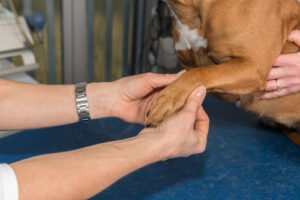Winter is one of my favorite seasons when it comes to horses. I know that may be an unpopular opinion, everybody reading this is thinking “but it’s so cold and soggy, you have to break ice on water buckets, the ground is hard, and yuck it is actually snowing!” But what winter brings to mind for me is the best feeling of swinging into a cold saddle on a fresh horse, the blessing of the hounds on the opening day of foxhunting season, and let’s not forget dressing horses up for Christmas parades! Whatever your feeling on horses in winter, we always get a few questions that I thought I would address. How to minimize risk of colic, what is the “right” blanketing strategy, and do we need to be concerned about our horse’s feet when it snows?
1. Colic: A horse can colic at any time of the year but we definitely tend to see a few more in the winter, this is often attributed to horses not drinking enough water which sets them up for impactions (obstructions of the GI tract). Horses also often aren’t moving around as much or are stalled for longer periods of time.
To encourage horses to drink more water, water trough heaters are always a great idea. Make sure to get the correct kind for your trough, but these are great for keeping water at a comfortable temperature. If it gets cold enough for ice to form be sure to break and remove the ice chunks from the top. Some horses are willing to make their own holes in the water but others aren’t and we don’t want to give them any more excuses than they already have in the winter for not drinking. For my own horses I also include a dose of equine specific electrolytes once daily in their feed, again to encourage water consumption. This will help keep everything moving smoothly.
And lastly, even though it’s cold, keeping your horse moving will keep their GI tract moving as well. So remember to give them as much turnout as possible, or if they are being stalled for long periods take them out for a couple 15 minutes hand walks per day.
2. Blanketing: A topic which I’m sure has started a few wars in the past. I think the right answer, as with so many things in the horse world, there is no one right answer. Individual horses have different responses to the cold. My family has a draft horse that was raised in Iowa who could care less when it is 20 degrees outside, but we also have a half Arabian and I swear if it drops below 40 she better have a blanket on or you will walk out in the morning and the pasture will be full of freshly dug holes as punishment, her go to response for being chilled.
There are many helpful charts online to use as a guideline. A general rule of thumb is if your horse has full winter coat and is in good body condition I wouldn’t even start considering a blanket until it is 25 degrees or below on a clear day. If they are calling for precipitation then start considering blankets at 35 degrees. Old, thin, or clipped horses require blankets at warmer temperatures since they don’t have their natural defense system. Always remember to apply blankets to clean, dry horses.
3. The dreaded “S” word – Snow: Whether you love it or hate it snow always adds a little extra work to our daily routine for our hooved friends. Trudging through snow to feed has always been fun for me….for about 5 minutes, then it loses the appeal and I realize my feet are cold, the pastures will be a mess, and now we have to worry about somebody turning their ankle on a snow ball attached to the bottom of their foot. This last part tends to be just a concern for horses in shoes, so if you don’t ride during the winter, your horse has good feet, and no lameness issues that require a shoe to be on constantly then consider letting your horse go barefoot during the time of year that we expect there to be the most snow. Otherwise here are some tips to keep the snowballs to a minimum.
Ask your farrier about anti-snowball pads to be applied in conjunction with your horse’s shoes. These are pads which help push snow out of the hoof area with each step. The only caveat to these is you must be diligent about keeping your horse’s feet and environment clean as pads, which can encourage a wet warmer environment, can predispose your horse to developing thrush.
The only other remedy I have had any luck with is applying Vaseline to the bottom of the hoof, ideally done at least twice daily and not as effective as the pads, but it still should help limit the build-up of snow/ice balls. You can also plan to stall your horse during a snow storm or run out and pick out their feet several times a day. Sorry there is no easy answer to this one! Pick which solution works best for your farm and stick with it!
I hope these tips will help you enjoy winter with your horse as much as I do with mine! Happy Holidays!
Dr. Rebecca Bacon




